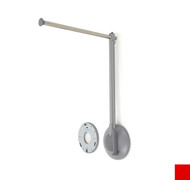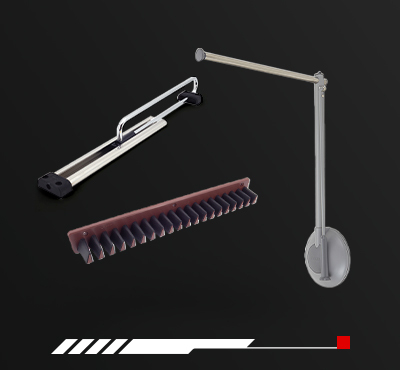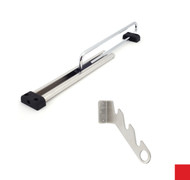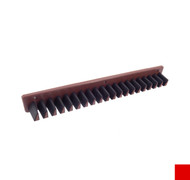
Closet Organization Hardware
Creating Space
Resolve space and organization challenges with Sugatsune closet accessories. Our experience in Japan is that space itself is a luxury. Therefore, we developed a line-up of closet organization hardware to bring this luxury into your life. Our Tallman series is one example. This lift system allows additional clothes to be stored high and out of the way. Thus giving you more space. It also incorporates a shock absorbing feature that provides a soft motion when the rod is returned to its stored position.
Closet Solutions with Heritage
Since 1930, Sugatsune has been a trusted source for precision-engineered hardware solutions. From architectural and furniture hardware to industrial components for industries including food, medical equipment, transportation, and aerospace, you can find the right solution to help build your creations. Sugatsune America is AS9120 B and ISO9001;2015 certified and distributes unique products that create convenience and satisfaction for people.
Frequently Asked Questions
What is a torque hinge and what do they provide?
A torque hinge, also known as a friction hinge or position control hinge, is a hinge designed to provide resistance to the pivoting motion of the hinge itself. This is achieved by a mechanism within the hinge that generates friction to provide this resistance. A common example of this type of hinge are those are found on most laptop computers.
The main benefit of torque hinges is that they will prevent unwanted movements of lids, doors, panels or display devices. This is why you can position your laptop screen at any desired angle. They also provide smooth and seamless operation throughout the opening range while typically providing resistance that limits the chances of slamming closed.
How do I select the right torque hinge for my project or application?
Sugatsune offers a comprehensive line up of torque or friction hinges with a multitude of types and strengths. A key step in selecting the right torque hinge is determining the torque strength required to support the object it will facilitate. Torque is the force that will be put on the friction mechanism and the hinge’s specifications need to be able to support the torque that the object will put on the hinge.
Torque is the force required to rotate something along an axis and the simplest way to calculate the amount of torque that your application will generate is by measuring the distance of the door, lid or flap from the hinge side to the opposing edge, multiply this by the total weight and then divide the result by 2.
Torque = (D x W) / 2 or ½ x D X W where D = distance of the panel from the hinge and W = total weight (including any handles, cladding, etc.)
You can also use our Hardware Selection Tool https://www.sugatsune.com/hardware-selection-tool/ to enter project details and find what hinges could work for you.
What types of torque hinges are there?
There are 3 basic types of mechanisms that can be used to create the friction in a hinge. There is a Disc type in which rotating discs sandwich a fixed disk and when they rotate, friction is created. There is a Curl type in which a spring is rolled round a fixed shaft so when the spring sheet rotates, friction is generated. A Pipe structure in which a shaft is press fitted into a plastic pipe so when the shaft rotates, resistance is created against this pipe. A more complex variation of the spring type is the Omega type which uses omega-shaped clips that are fitted around a rotating shaft. The advantage is that they can provide more resistance for their size so great for smaller compact needs and will provide consistent torque over longer periods of time.




